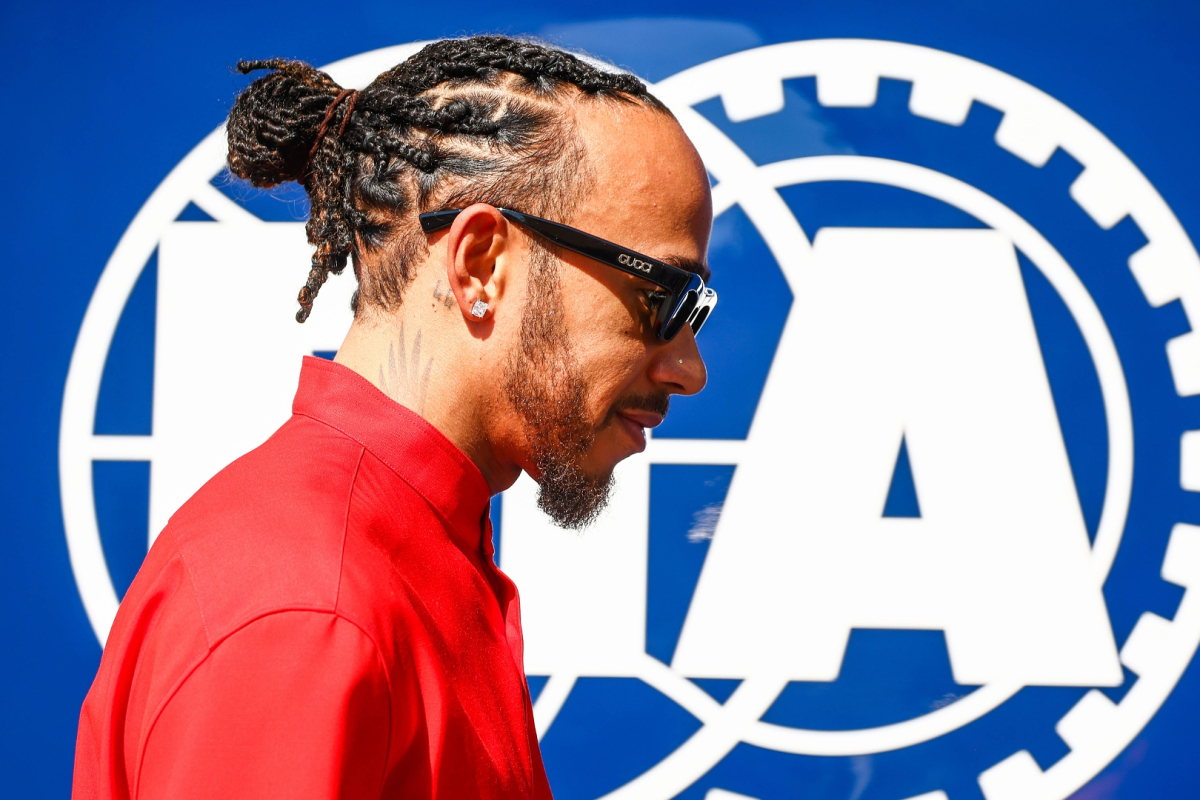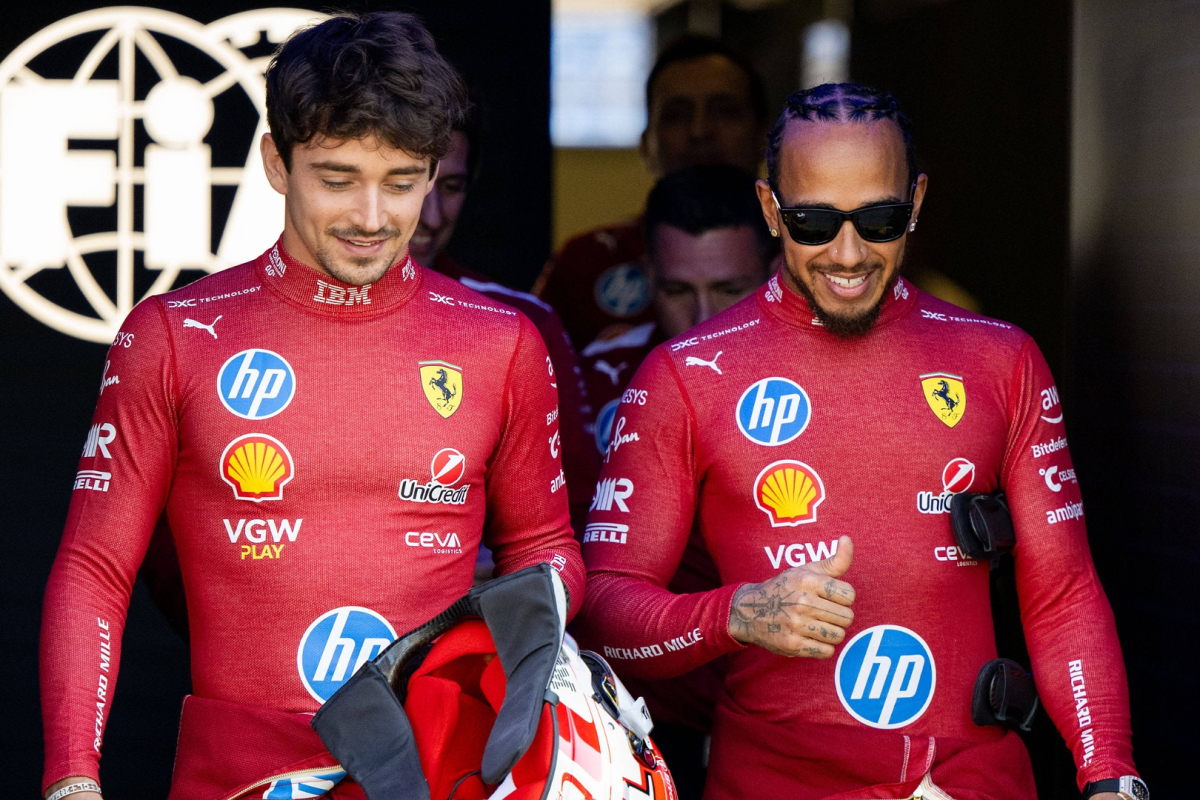Lewis Hamilton, the seven-time Formula 1 World Champion, found himself at the center of a firestorm following a shocking elimination in Q1 at the Belgian Grand Prix.
His early exit left him visibly frustrated, not just with his own performance, but with the very governing body of the sport, the FIA.
Hamilton’s scathing remarks about the FIA’s handling of track limits, along with his dramatic departure from the weekend, stirred up the Formula 1 community and raised important questions about consistency and fairness in the sport.

The Elimination: A Nightmare for Hamilton
Hamilton’s Q1 elimination at Spa was a bitter pill for the seasoned driver to swallow. A combination of a rough Friday, where he struggled during the sprint qualifying session, and his disqualification in Q1 placed him in an uncomfortable position on the grid. After enduring a day full of difficulties, this particular setback felt like the final straw. Hamilton was knocked out in 16th position, leaving him with little chance to recover throughout the rest of the weekend.
But the main source of his frustration wasn’t merely the result. Instead, it was the controversial track limits decision made by the FIA. Hamilton’s fastest lap time was deleted after it was determined that all four wheels of his car had gone beyond the white line at turn four. For a driver with as much experience and success as Hamilton, this felt like an unjust penalty.
The FIA’s Track Limits Controversy
The FIA’s track limits rule, which has been a consistent point of contention in recent seasons, played a central role in Hamilton’s elimination. In this instance, the governing body deemed that Hamilton had exceeded the track boundaries, invalidating his fastest lap. For a driver of his caliber, having his lap time erased due to a relatively small breach of track limits is frustrating, especially when similar laps earlier in the weekend were seemingly not penalized.
Hamilton wasted no time in voicing his displeasure with the decision. Speaking to the media shortly after his elimination, he openly criticized the consistency of the FIA’s rulings, calling the enforcement of track limits harsh and unpredictable. He pointed out that, during previous laps in the weekend, he had taken similar lines through turn four without facing any penalty. To him, the call felt like an arbitrary decision that cost him dearly. His direct and sharp criticism was a clear sign of his mounting frustration with the situation.
Hamilton’s Determination to Question the Decision
Hamilton didn’t back down. He questioned the rationale behind the FIA’s decision, insisting that he had followed the same line as before without issue. Even though the FIA later revealed they had access to additional camera angles to confirm the violation, Hamilton was still unconvinced. He admitted that the lap was his mistake but maintained that he still didn’t fully agree with the penalty.
This situation highlighted an ongoing issue within the sport: the inconsistency of track limits enforcement. While the FIA is tasked with maintaining fairness and consistency, many drivers, including Hamilton, have felt that certain calls seem arbitrary and unclear. This inconsistency often leads to confusion and frustration, especially when a single decision can have such a significant impact on a driver’s weekend.
The Radio Exchange: A Lack of Empathy?
The frustration Hamilton felt wasn’t only about the penalty. His post-penalty radio exchange with his race engineer, Ricardo Adami, further exacerbated his feelings. After crossing the line, Hamilton asked, “Is everything okay?” The response he received was blunt and impersonal: “Track limits, turn four, you’re out.” There was no empathy, no sign of support, and no attempt to offer comfort. This response starkly contrasted with Hamilton’s past experiences with his longtime engineer, Peter Bonington, at Mercedes. In the past, Bonington had a knack for offering a calming and supportive tone, even in difficult moments.
The lack of emotional support in this instance was noticeable. Sky Sports analyst Ted Kravitz noted that Adami’s flat, emotionless response made it seem like the human connection that is so vital in such tense moments was missing. This moment served as a reminder that Hamilton, despite his illustrious career, is still new at Ferrari, and the bond between driver and engineer takes time to develop. The lack of camaraderie and support made the situation sting even more for Hamilton, and it’s clear that his frustration wasn’t solely about the FIA’s decision but also about the emotional disconnect within his new team.

Charles Leclerc’s Positive Weekend
While Hamilton was grappling with the devastating news, his teammate Charles Leclerc enjoyed a much better weekend. Leclerc managed to qualify in an impressive P3, showing that the Ferrari car still had pace despite its ongoing struggles. Ferrari’s updates, including changes to the rear suspension, seemed to have had a positive impact on the car’s stability and grip, making Leclerc optimistic about the improvements.
Leclerc’s composed and calm demeanor was a stark contrast to Hamilton’s mood. While one side of the Ferrari garage was feeling confident, the other was visibly struggling. For Hamilton, it must have been difficult to watch Leclerc’s success when his own weekend was quickly descending into chaos. The disparity in performance between the two Ferrari drivers added more pressure to Hamilton, who was left wondering why the same car could deliver two such different outcomes.
Ferrari’s Shifting Focus to the Future
Looking at Ferrari’s broader strategy, it appears that the team is already turning its focus to the future, specifically the 2026 season. With the SF25 still lagging behind the front-running teams, including McLaren, Ferrari seems to be pivoting away from short-term results and focusing its resources on developing a stronger car for the upcoming seasons. Hamilton, however, hinted that the team has likely exhausted all possible upgrades for this year, making it clear that the focus is shifting toward long-term success.
This shift in focus is understandable given the team’s struggles this season. Ferrari has been constantly battling to find consistency and performance, but the reality is that they are unlikely to close the gap to the front-runners in the remaining races of the season. For drivers like Hamilton, who joined Ferrari with high expectations, this transition could prove difficult. However, the team’s long-term planning might be the key to ensuring a brighter future.
The Weather: A Possible Twist in the Tale?
Despite the overwhelming frustration, Hamilton is not completely ruling out a comeback. The forecast for race day calls for rain, which could provide an opportunity for a dramatic turnaround. Wet weather often shakes up the order in Formula 1, and unpredictable conditions can transform what looks like a disastrous weekend into a surprising opportunity. Hamilton himself acknowledged the unpredictability of F1, stating that “Anything can happen” in a race.
The rain could be a potential game-changer, giving Hamilton a slim chance to climb back up the order if Ferrari can execute the right strategy. As we’ve seen in the past, unexpected moments like these can create chaos and open up opportunities for the most prepared teams to capitalize. Hamilton is holding onto that hope, even if it seems unlikely.
Conclusion
The Belgian Grand Prix weekend has proven to be a frustrating and dramatic one for Lewis Hamilton. His elimination in Q1 and subsequent criticisms of the FIA have reignited the debate over the consistency and fairness of track limits enforcement in Formula 1. Meanwhile, Ferrari is facing its own set of challenges, with a team that is shifting its focus to long-term goals. For Hamilton, it’s a reminder that in Formula 1, nothing is ever guaranteed, and even the most seasoned drivers can face setbacks.
As the season progresses, Hamilton’s frustration will likely linger, and the sport will continue to wrestle with the issue of fairness and consistency. The pressure is building on all sides, and fans are waiting with bated breath to see what will come next. Will Hamilton’s frustration turn into a catalyst for change? Only time will tell.
Full Video:






